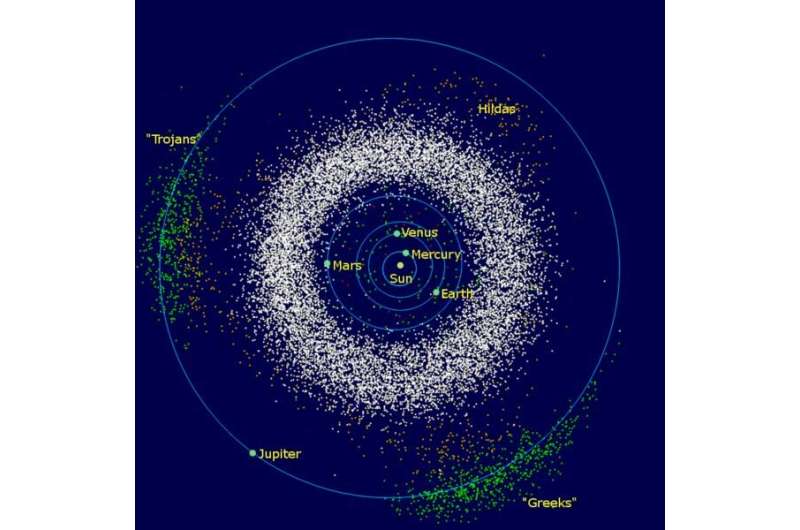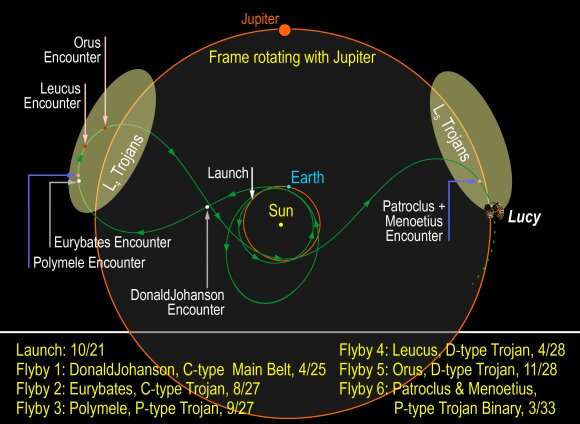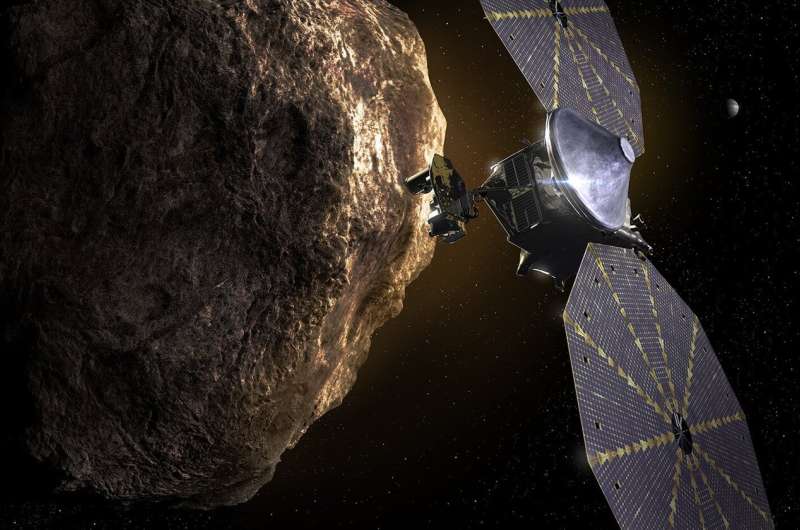Over billions of years of impacts, the result is that more L4 objects have been battered into eccentric shapes than those in L5.
This discovery is a lesson learned regarding the evolutionary history of the solar system, and the Jupiter Trojans may have plenty more to offer scientists in that respect in the near future. In order to get a closer look at these primordial remnants of the early solar system, NASA is set to launch a robotic spacecraft to visit the Trojans later this year. The mission is named Lucy, after the fossilized remains of an early human ancestor found in Ethiopia in 1974. Lucy taught paleontologists about the evolution of humans, and in a similar way, the Lucy spacecraft will be able to teach astronomers about the early history of the solar system.

One of Lucy's key objectives is to understand the composition and diversity of Trojan objects. It is believed that these asteroids represent the leftovers of planet formation, so learning about their structure, age, and component materials will help us to understand the ingredients which went into making the planets we see today, possibly including the organic materials that found their way to Earth in its infancy.
Lucy will take advantage of lessons learned from previous missions, carrying instruments similar to those flown on NASA's New Horizons, which flew past Pluto in 2015, and OSIRIS-Rex, which is currently bringing a sample back to Earth from Asteroid Bennu. Using a series of clever gravity assists, Lucy will be able to visit more targets in a single mission than any solar system probe before it, flying past at least eight asteroids over 12 years, starting with one in the main asteroid belt, then bouncing back and forth between objects in the L4 and L5 swarms.

Careful planning and a bit of astronomical luck means that Lucy will even get the chance to visit two targets in the L5 swarm that travel in high-inclination orbits, making them normally very difficult to reach. The binary pair, Patroclus and Menoetius, will pass within reach of Lucy in 2033, making for a spectacular finale to Lucy's primary mission.
Lucy will launch from Cape Canaveral, Florida on an Atlas V rocket in October. The complete mission timeline is as follows:
- October 16, 2021: The three-week long launch window opens.
- April 20, 2025: Main asteroid belt object (52246) Donaldjohanson.
- August 12, 2027: L4 object (3548) Eurybates and its satellite, Queta.
- September 15, 2027: L4 object (15094) Polymele.
- April 18, 2028: L4 object (11351) Leucus.
- November 11, 2028: L4 object (21900) Orus.
- March 2, 2033: L5 object (617) Patroclus and its partner, Menoetius.
Whatever else Lucy might discover, it is clear that a combination of ground-based astronomy and spacecraft flybys are opening up a new chapter in our understanding of planetary formation, and the Trojans probably have more surprises in store for us in the years to come.
Explore further



